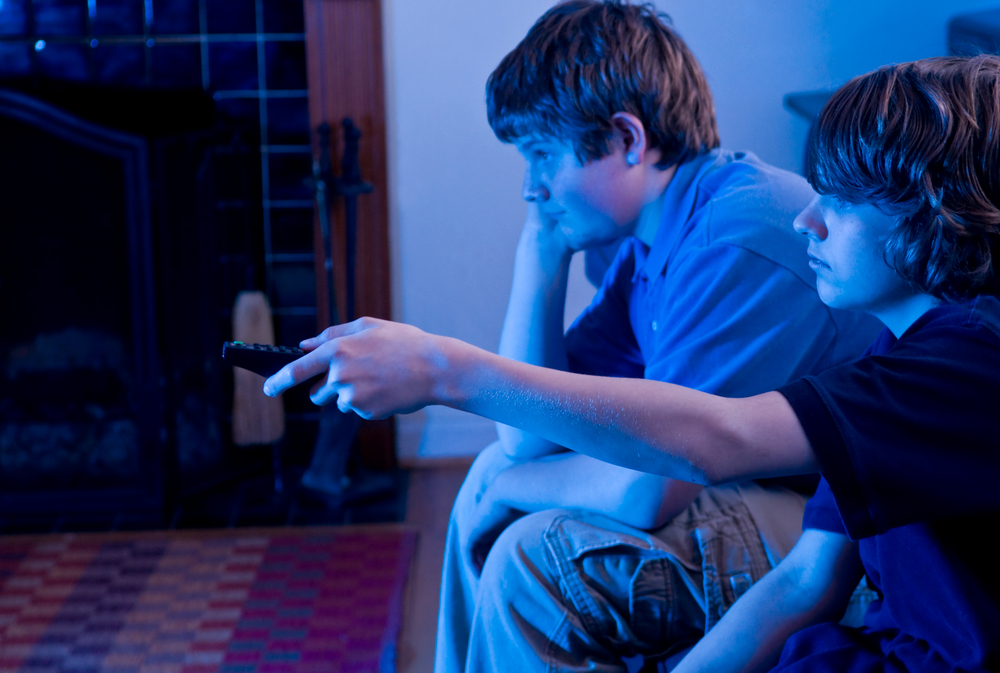by Megan Scott
Do you remember the first time a news story impacted you personally?
For most of us, this happened when we were young and might involve the Space Shuttle Challenger’s ill-fated flight, the breaking apart of the Berlin Wall, or our favorite team winning the Stanley Cup. As children, our access to these news stories was probably limited to the local channels, radio stations, magazines, and newspapers. Now, fast forward a few years, and we live in an increasingly connected world that allows news to stream into our homes and lives at any given minute.
Many psychologists are finding a correlation between today’s online culture and news media with an alarming rise in our anxiety levels. Unlike the days of our childhoods, today we are constantly greeted with stories of terrorism, school shootings, violence, bullies, fake news, angry politics, and more. As parents, this influx of negative news and heart wrenching stories might cause us to question how our kids are being affected by what they read and see on the news.
How the News Affects Kids Emotionally
It should come as no surprise, that Common Sense Media research discovered close to two-thirds of our boys and girls feel depressed, scared, worried, and upset after encountering today’s news media. It went on to unearth that younger adolescents were more likely to express these feelings than older teens. While there are a variety of factors to consider, we need to take into account a child’s maturity and their youthful mindsets for processing increasingly adult subject matters.
While it might be tempting to shield our sons and daughters from the doom and gloom, there is hope. Within the same body of research, they found access to news and current events left children feeling empowered and informed. Surprisingly, 70 percent of the kids surveyed actually felt smarter after hearing, reading, or watching the news- even if it was uncomfortable or scary.
“Fake News” and Its Impact on Children
Realizing the news isn’t harming our kids might feel comforting, but we need to also consider “fake” news. Fake news is a current hot topic, mainly regarding American politics. While many of us write this off to political madness, there is actually a bit of truth lurking behind the headlines. Unfortunately, fake news is real and is solely published with the intent to mislead people with sensationalism, exaggeration, and attention grabbing headlines.
The problem with fake news is that it can be hard to discriminate between real newsworthy stories. This common form of clickbait is geared to increase readership and online sharing by using eye-catching headlines and thrilling stories. For children, this type of questionable journalism can be difficult to recognize and the sensationalism may lead to increased fear.
A survey of 853 children, between the ages of 10 and 18 in the United States, found that 30 percent of the group reported they had mistakenly shared a fake news story online sometime during the past six months. The children went on to say they discovered later the story had been inaccurate or wrong. This highlights the problem of how kids can have trouble distinguishing real news from fake stories.

5 Essential Tips to Help Kids Understand the News
Among all this bad news, there is some good news to share: we have a unique opportunity to help our kids understand the news with a little reassurance and direction. To help on this journey, we have put together five essential tips:
Talk about ways to differentiate reliable news sources from fake ones. Encourage children to consider the source of information, read beyond the headlines, do a little fact checking, and check the date of the article will help kids discern facts from fiction.
Discuss news as a family. According to the previous Common Sense Media study, children are more likely to believe news if it comes from trusted family members. We need to take advantage of this opportunity, making sure kids have access to correct information. It will also give us a chance to begin ongoing conversations and reduce any concerns if they have any.
Keep it simple. Younger children just want to know the basics and what it means for them. Use straightforward explanations and age appropriate vocabulary to help keep them informed.
Find media and news sources geared toward children. Instead of allowing unlimited access to adult centered news, consider setting screen limits and look for news outlets created for kids.
Help children feel safe. Today’s news can cause anxiety and fear, but our kids need to see us calm and collected. Remind them they are loved, safe, and encourage them to talk about any fears.
What methods do you use to help children make sense of the news?
 Megan Scott is a writer and mother of two beautiful twins. She wants to use her knowledge and expertise to help others lead a better life. Her hobbies include writing, long distance running and travelling with her beloved family. Follow her on twitter as @meganscotts
Megan Scott is a writer and mother of two beautiful twins. She wants to use her knowledge and expertise to help others lead a better life. Her hobbies include writing, long distance running and travelling with her beloved family. Follow her on twitter as @meganscotts


1 Comment
Some news can scare the kids, good uuggestions